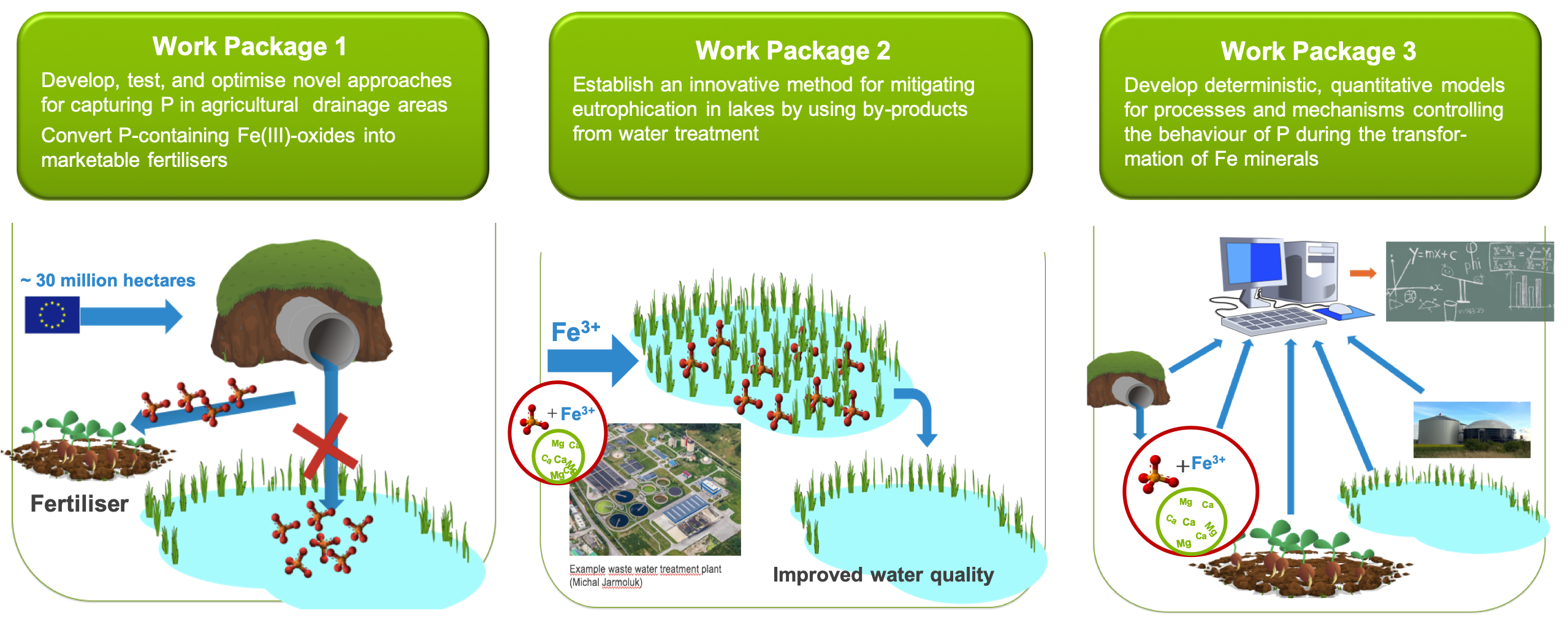General project description
P-TRAP: Diffuse phosphorus input to surface waters – new concepts in removal, recycling and management
P-TRAP – as a H2020 MSCA-ITN European Training Network – is a consortium of 16 international participants and hosting 11 Early-Stage Researchers (ESRs). A characteristic of these networks is a combined focus not only on science but also on training of a new generation of creative, entrepreneurial and innovative ESRs.
Scientifically P-TRAP targets two interlinked global problems: I) the flux of phosphate (P) from agricultural areas to surface waters is wasting a resource which is becoming scarce, and II) on the other hand, an enhanced loading of surface water with P is the main cause for eutrophication. Both are in conflict with our understanding of circular economy and a key challenge in meeting the objectives of the EU Water Framework Directive. Within P-TRAP we will develop new methods and approaches to trap P in drained agricultural areas and in the sediments of eutrophic lakes, aiming on constraining the uncontrolled loss of P in one system and preventing the others from overloading.
The project is organised in 3 scientific, 1 training and 3 more administrative Work Packages (WPs). The WPs are closely interconnected and each WP tackles specific objectives and tasks to ensure a successful project.


